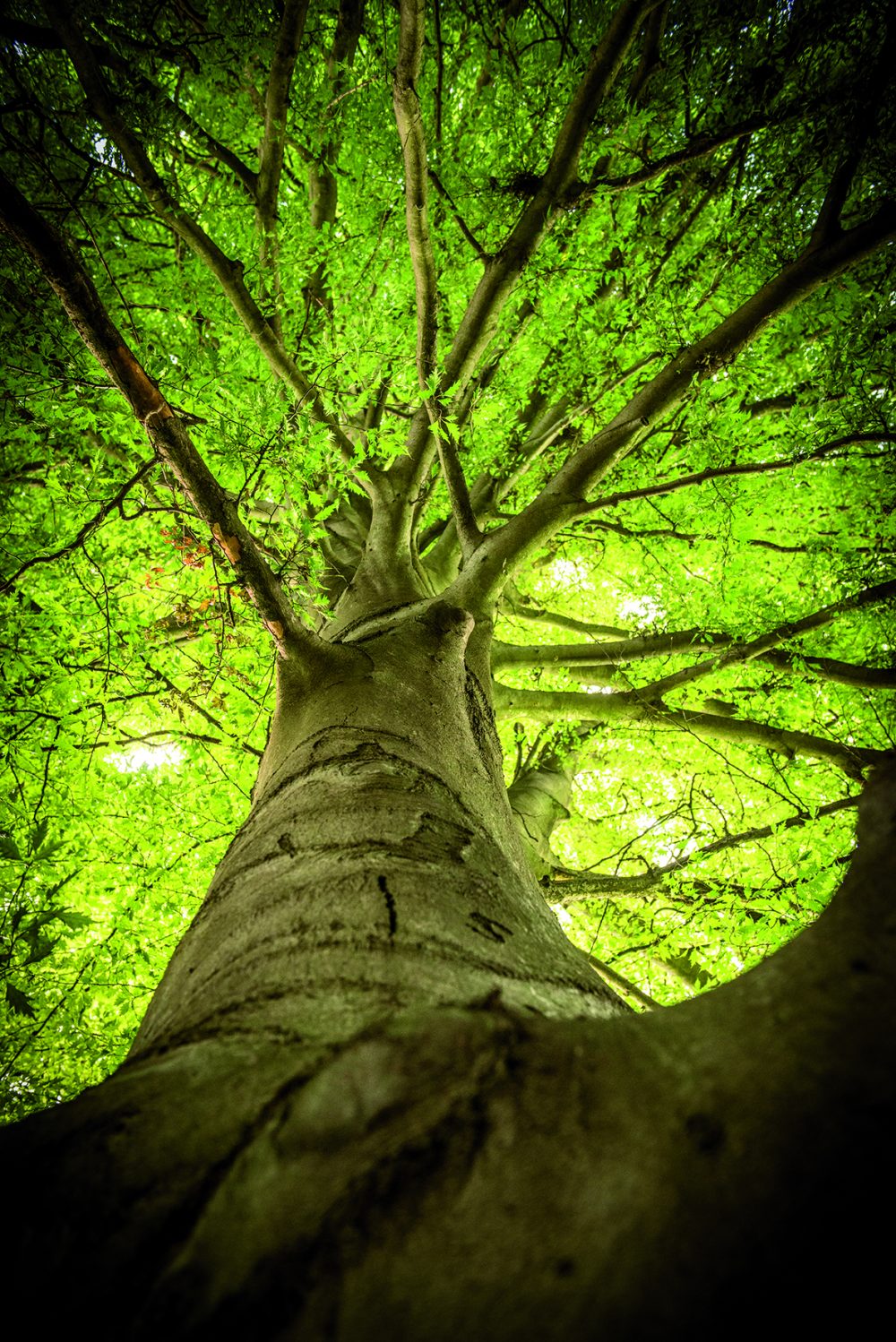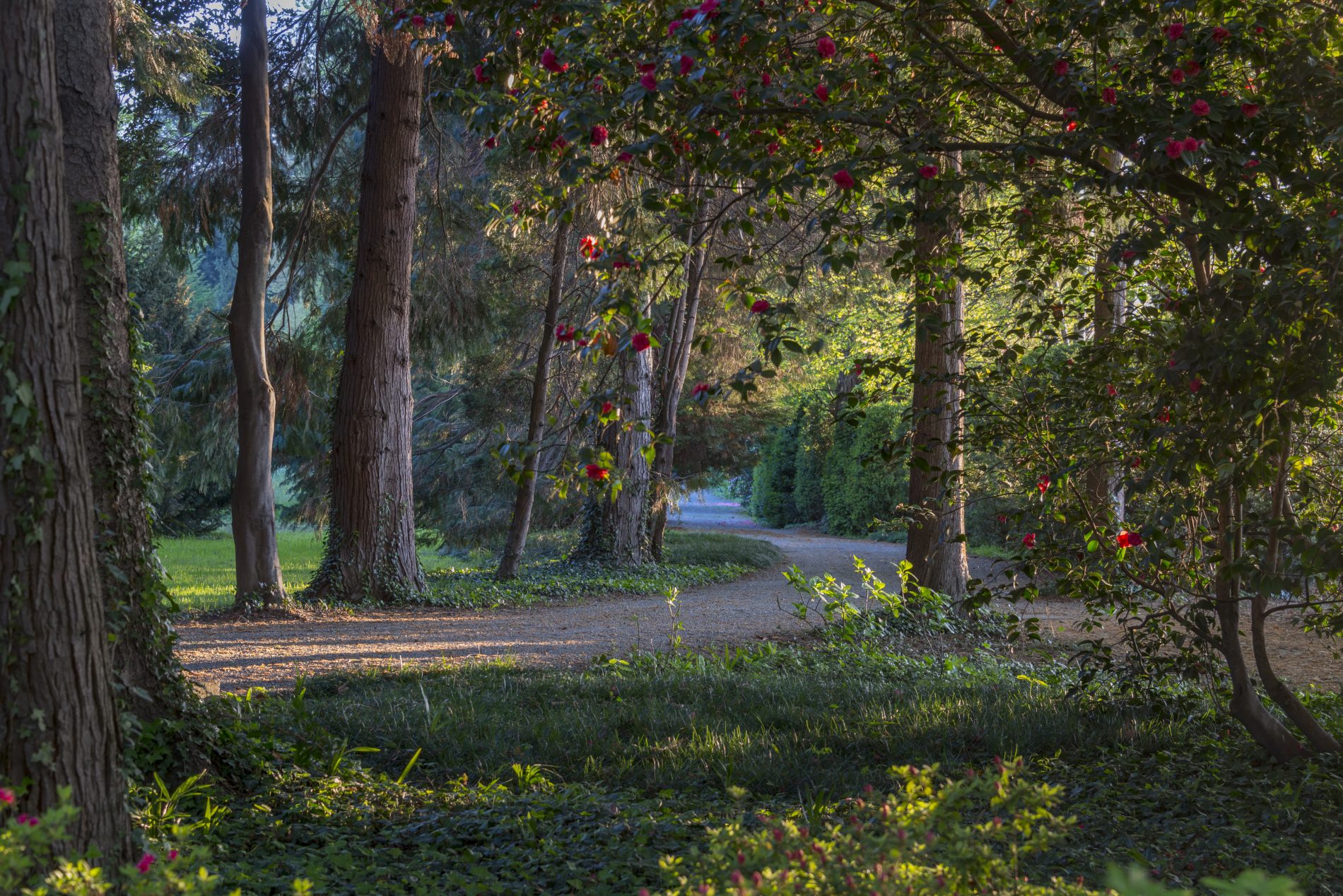The Asplenifolia Beech
This beech tree is a Fagus sylvatica aspleniifolia and it is the tree I feel most connected to.
With its silver-gray bark reminiscent of an elephant’s hide and its soft, cascading form, it is one of the rarest ornamental varieties found in gardens.
Its name derives from the shape of its leaves, characterized by deeply sinuous lobes that resemble those of the Asplenium fern.
The layered canopy of overlapping leaves creates dense shade, discouraging the growth of species intolerant of darkness and rendering beech forests, which are devoid of underbrush, unrealistically silent. The long branches keep the ground cool even in the hottest months. The leaves, which linger on the branches until deep into winter, retain an unmistakable glow, whether green or red. In spring, while other trees are already budding, the beech remains dormant, waiting for at least 13 hours of daylight to awaken.
The beech is considered the “mother of the forest” because its fallen leaves, which accumulate year after year, provide generous nourishment and natural mulch. They close nature’s cycle, returning nutrients to the soil that the tree consumed as it grew.
This specimen has suffered from rising summer temperatures and the sun’s intensity, which has caused it to weaken. The portion of the canopy most exposed to sunlight dried out gradually until the tree shed its dead branches, rendering it now useless for photosynthesis and vulnerable to potentially harmful pathogens.
This elderly and ailing tree is constantly monitored and cared for with special soil treatments which act as natural fortifiers to help it face adversities like fungi and drought. Trees cannot move, and they seek strength to adapt to changing conditions.
We dedicate to this tree the words of Hermann Hesse, who, in “The Song of the Trees,” describes the tenacity of the beech: “I have always been cheered by the tenacity with which my little beech holds onto its leaves. When everything has long been bare, it still wears its withered mantle (...). Then, in spring, it transforms—shedding its old coat to reveal fresh, tender buds...”

This beech tree is a Fagus sylvatica aspleniifolia and it is the tree I feel most connected to.
With its silver-gray bark reminiscent of an elephant’s hide and its soft, cascading form, it is one of the rarest ornamental varieties found in gardens.
Its name derives from the shape of its leaves, characterized by deeply sinuous lobes that resemble those of the Asplenium fern.
The layered canopy of overlapping leaves creates dense shade, discouraging the growth of species intolerant of darkness and rendering beech forests, which are devoid of underbrush, unrealistically silent. The long branches keep the ground cool even in the hottest months. The leaves, which linger on the branches until deep into winter, retain an unmistakable glow, whether green or red. In spring, while other trees are already budding, the beech remains dormant, waiting for at least 13 hours of daylight to awaken.
The beech is considered the “mother of the forest” because its fallen leaves, which accumulate year after year, provide generous nourishment and natural mulch. They close nature’s cycle, returning nutrients to the soil that the tree consumed as it grew.
This specimen has suffered from rising summer temperatures and the sun’s intensity, which has caused it to weaken. The portion of the canopy most exposed to sunlight dried out gradually until the tree shed its dead branches, rendering it now useless for photosynthesis and vulnerable to potentially harmful pathogens.
This elderly and ailing tree is constantly monitored and cared for with special soil treatments which act as natural fortifiers to help it face adversities like fungi and drought. Trees cannot move, and they seek strength to adapt to changing conditions.
We dedicate to this tree the words of Hermann Hesse, who, in “The Song of the Trees,” describes the tenacity of the beech: “I have always been cheered by the tenacity with which my little beech holds onto its leaves. When everything has long been bare, it still wears its withered mantle (…). Then, in spring, it transforms—shedding its old coat to reveal fresh, tender buds…”
Audio
I punti di interesse
Ti trovi qui
